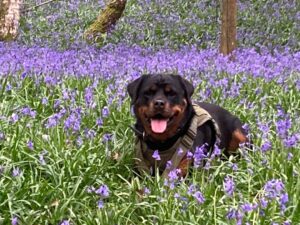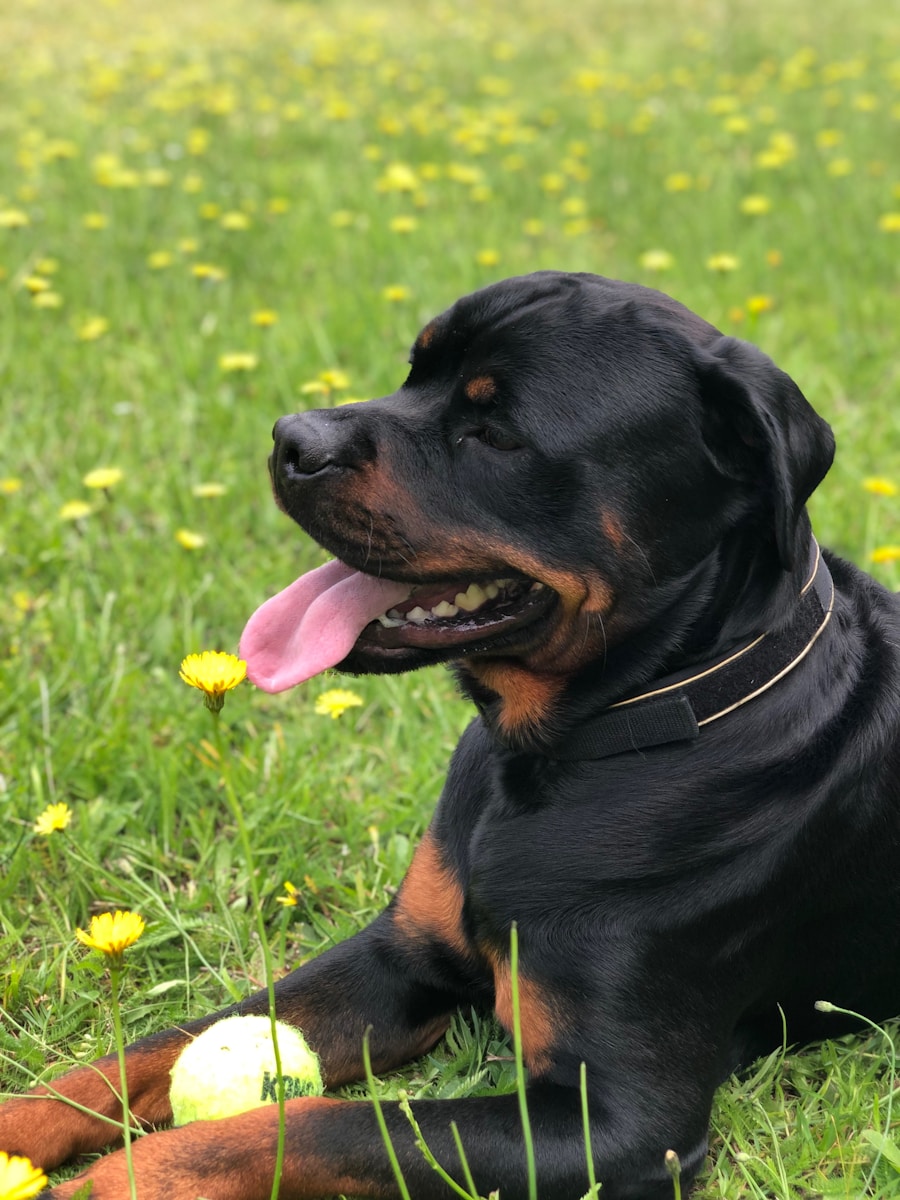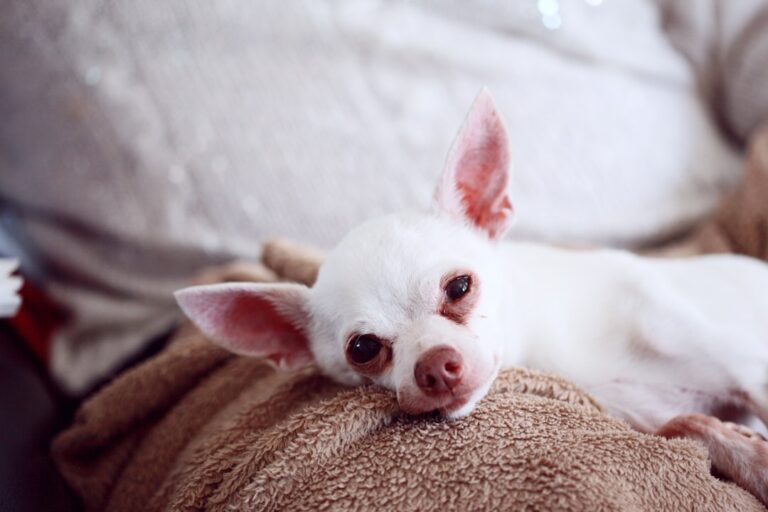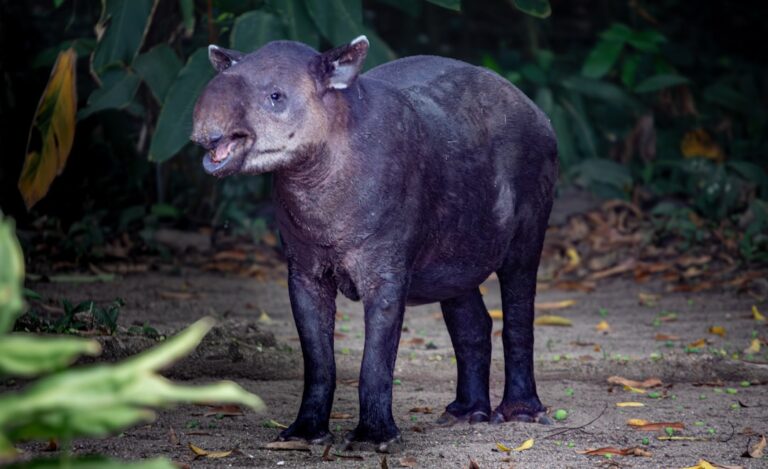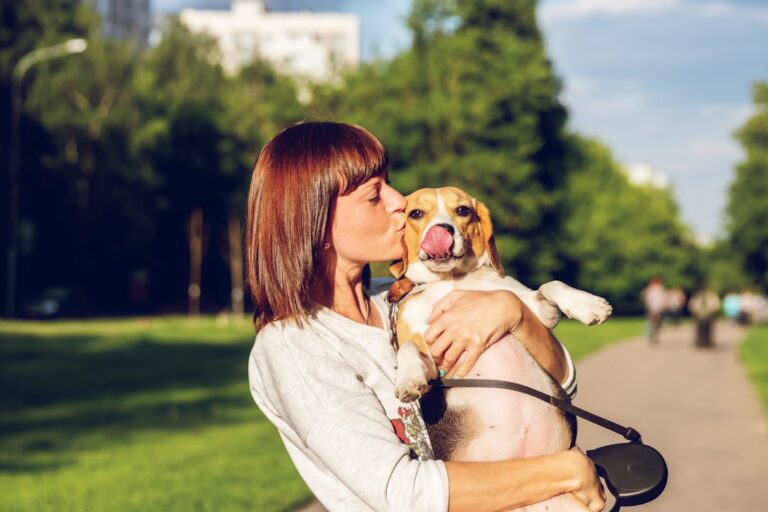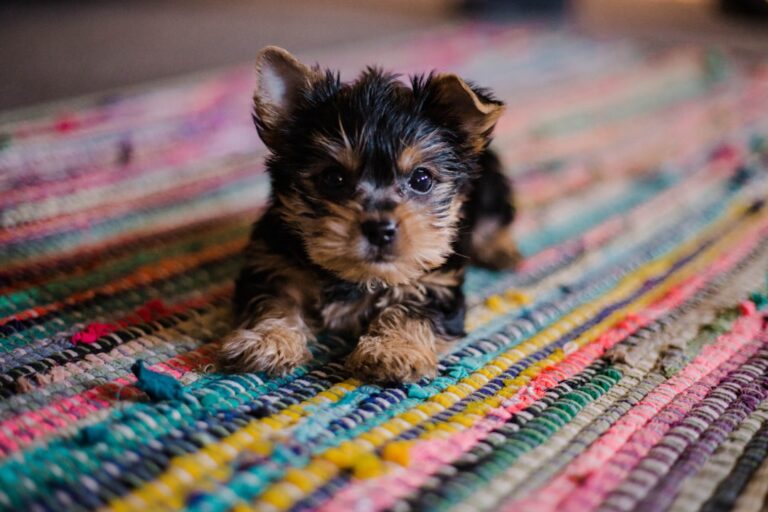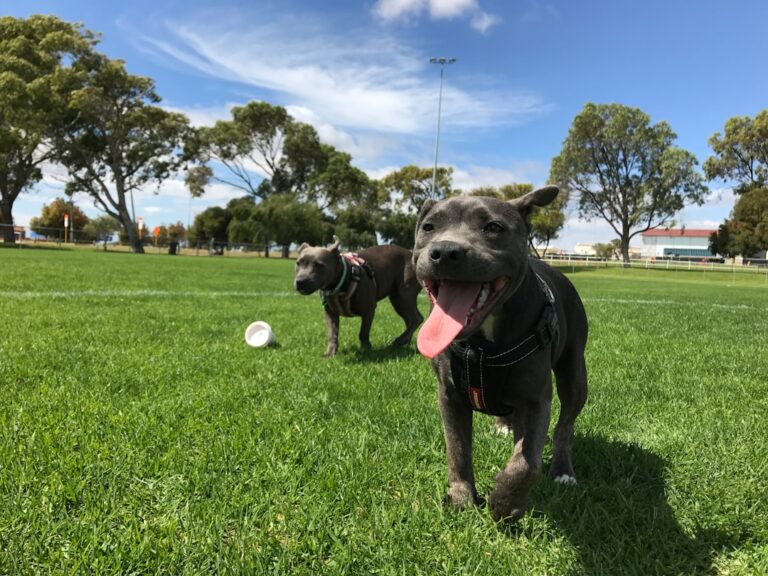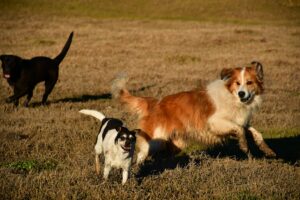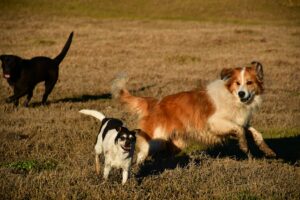The Rottweiler breed has a rich and storied history that dates back to ancient times. Its origins can be traced to the Roman Empire, where these dogs were utilized as herding and guarding animals. The Romans relied on them to drive cattle and protect their livestock as they marched across Europe.
The breed’s name is derived from the town of Rottweil in Germany, which became a significant center for cattle trading during the Middle Ages. As the Romans settled in this region, they brought their dogs with them, which eventually evolved into what we now recognize as the Rottweiler. In the 19th century, the Rottweiler faced a decline in popularity as the need for herding dogs diminished with the advent of modern transportation.
However, the breed experienced a resurgence in interest when it was recognized for its versatility and strength. The establishment of breed clubs and formal standards helped to solidify the Rottweiler’s status as a distinct breed. By the early 20th century, Rottweilers were being used not only as working dogs but also as companions, leading to their widespread acceptance in various roles within society.
Key Takeaways
- Rottweilers were originally bred in Germany as herding and guarding dogs for Roman armies.
- Rottweilers are large, muscular dogs with a distinctive black and tan coat and a powerful build.
- Rottweilers are known for their loyalty, confidence, and protective nature, making them excellent guard dogs.
- Proper training and socialization are crucial for Rottweilers to ensure they are well-behaved and obedient.
- Rottweilers are prone to certain health issues such as hip dysplasia and require regular exercise and veterinary care.
Physical Characteristics and Appearance of Rottweilers
Physical Characteristics
Adult males typically weigh between 95 to 135 pounds, while females range from 80 to 100 pounds. Their muscular physique is complemented by a broad head, strong jaws, and a pronounced stop, giving them an imposing appearance.
Coat and Coloration
The breed’s coat is short, dense, and weather-resistant, usually featuring a striking black base with distinct tan markings on the face, chest, and legs. This coloration not only enhances their aesthetic appeal but also serves a practical purpose by providing camouflage in various environments. The Rottweiler’s eyes are medium-sized and dark, exuding an intelligent and confident expression.
Body Language and Heritage
Their ears are triangular and hang close to the head, adding to their alert demeanor. The tail is typically docked in many countries, although some regions allow for natural tails. Overall, the Rottweiler’s physical characteristics convey strength and stability, making them easily recognizable among other breeds. Their powerful stance and confident gait further emphasize their heritage as formidable working dogs.
Temperament and Personality Traits of Rottweilers
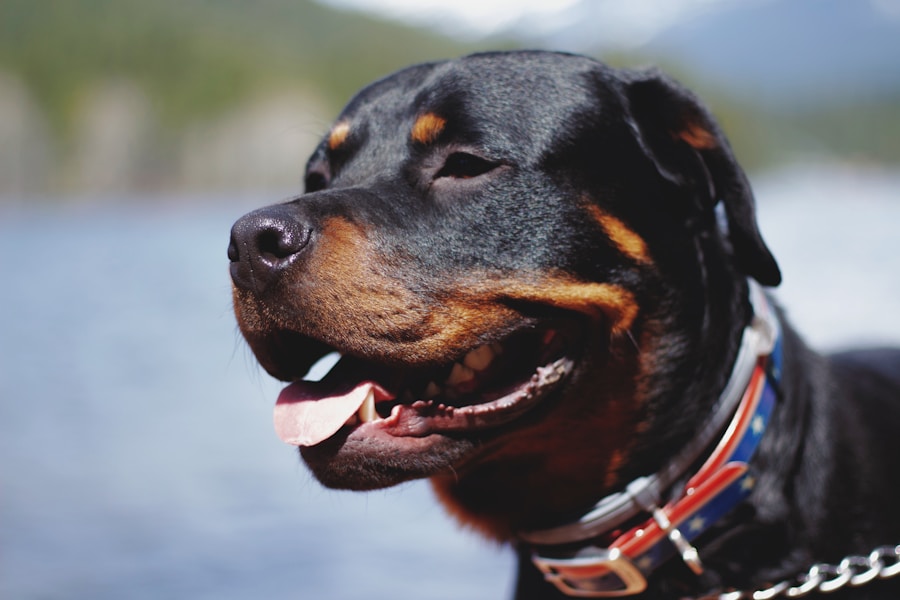
Rottweilers are often misunderstood due to their imposing appearance; however, they possess a temperament that is both loyal and affectionate. They are known for their strong protective instincts, which make them excellent guardians for families and properties alike. This protective nature is balanced by their loyalty to their owners, often forming deep bonds with family members.
Rottweilers are intelligent dogs that thrive on companionship and require regular interaction with their human counterparts to remain happy and well-adjusted. Despite their reputation for being aggressive, Rottweilers can be gentle and loving when properly socialized from an early age. They are known to be good with children and can be playful companions when raised in a nurturing environment.
However, their natural instincts can lead them to be wary of strangers, making early socialization crucial to ensure they develop a well-rounded personality. With consistent training and positive reinforcement, Rottweilers can learn to distinguish between genuine threats and benign situations, allowing them to be both protective and approachable.
Training and Socialization of Rottweilers
| Training and Socialization of Rottweilers | |
|---|---|
| Training Time | 1-2 hours per day |
| Socialization Age | 3-14 weeks |
| Basic Commands | Sit, Stay, Come, Down |
| Advanced Training | Agility, Obedience, Protection |
| Socialization Activities | Exposure to different people, animals, and environments |
Training a Rottweiler requires patience, consistency, and an understanding of the breed’s unique characteristics. Their intelligence makes them quick learners; however, they can also exhibit stubbornness if not properly motivated. Positive reinforcement techniques, such as treats and praise, are particularly effective in encouraging desired behaviors.
Early obedience training is essential for Rottweilers to establish boundaries and ensure they understand their role within the family structure. Socialization is equally important for Rottweilers, as it helps them develop confidence and adaptability in various situations. Exposing them to different environments, people, and other animals from a young age can prevent behavioral issues later in life.
Puppy classes or group training sessions provide excellent opportunities for socialization while reinforcing basic commands. A well-socialized Rottweiler is more likely to be calm and composed in unfamiliar situations, reducing the likelihood of fear-based aggression or anxiety.
Health and Care Considerations for Rottweilers
Like all breeds, Rottweilers are prone to certain health issues that potential owners should be aware of. Common concerns include hip dysplasia, elbow dysplasia, and certain heart conditions such as dilated cardiomyopathy. Regular veterinary check-ups are essential for early detection and management of these conditions.
Responsible breeding practices can also help mitigate genetic predispositions to health problems; therefore, prospective owners should seek reputable breeders who prioritize health testing. In addition to regular veterinary care, proper nutrition plays a crucial role in maintaining a Rottweiler’s health. A balanced diet tailored to their age, weight, and activity level is vital for preventing obesity—a common issue in this breed due to their large size.
Regular exercise is equally important; Rottweilers require daily physical activity to keep them fit and mentally stimulated. Engaging in activities such as walking, running, or playing fetch not only promotes physical health but also strengthens the bond between the dog and its owner.
Rottweilers as Working Dogs
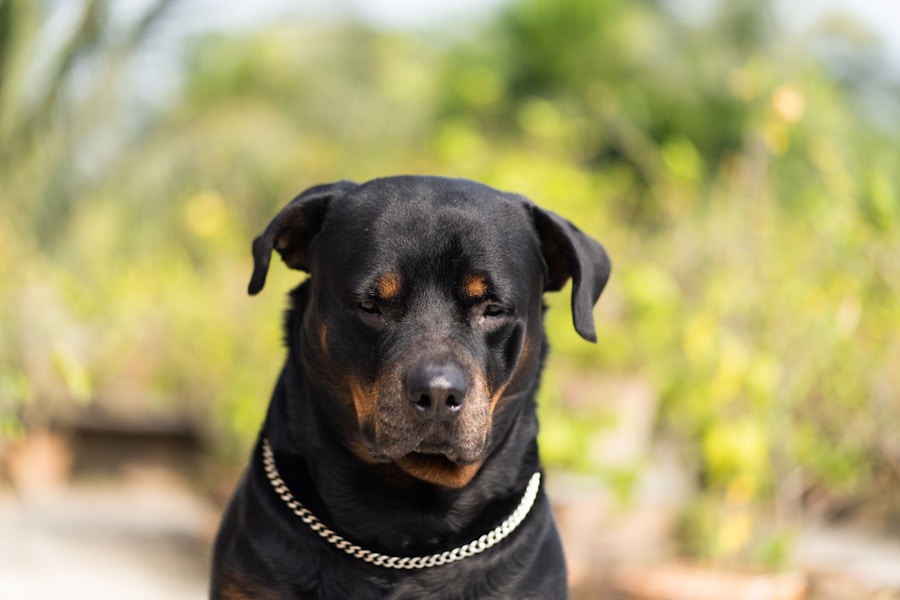
Historically, Rottweilers have excelled in various working roles due to their strength, intelligence, and versatility. They have been employed as herding dogs, guard dogs, police dogs, search-and-rescue dogs, and even therapy animals. Their keen sense of smell and ability to learn complex tasks make them ideal candidates for roles that require both physical prowess and mental acuity.
In law enforcement settings, Rottweilers are often used for tracking suspects or detecting narcotics due to their strong work ethic and loyalty to their handlers. In addition to traditional working roles, Rottweilers have also found success in competitive dog sports such as obedience trials, agility competitions, and Schutzhund—a sport that tests tracking, obedience, and protection skills. Their natural athleticism allows them to excel in these activities while providing an outlet for their energy.
Engaging in such pursuits not only keeps Rottweilers physically active but also mentally stimulated, reinforcing their bond with their owners through shared experiences.
Rottweilers as Family Pets
Rottweilers can make exceptional family pets when raised in a loving environment with proper training and socialization. Their loyalty and protective instincts often lead them to form strong attachments to family members, making them devoted companions. Many families appreciate the breed’s ability to serve as both a loving pet and a reliable guardian for children.
With appropriate supervision and training, Rottweilers can coexist harmoniously with kids, often displaying patience and playfulness. However, potential owners must recognize that owning a Rottweiler comes with responsibilities. They require consistent training and socialization throughout their lives to ensure they remain well-behaved members of the family.
Additionally, providing mental stimulation through interactive toys or training exercises can help prevent boredom-related behavioral issues. When given the right environment—one that includes love, structure, and plenty of exercise—Rottweilers can thrive as cherished family pets.
Rottweilers in Popular Culture and Media
Rottweilers have made notable appearances in popular culture and media over the years, often portrayed as strong and loyal companions or formidable protectors. Films such as “The Omen” featured Rottweilers in roles that emphasized their guarding instincts while also contributing to their reputation as fierce dogs. In contrast, other portrayals have highlighted their affectionate nature; movies like “The Dog Who Saved Christmas” showcased Rottweilers as loving family pets who protect their loved ones from danger.
Television shows have also contributed to the breed’s visibility; various series have featured Rottweilers as loyal companions or service dogs that assist characters in overcoming challenges. These portrayals have helped shape public perception of the breed—while some representations may lean towards emphasizing aggression or fearfulness, others highlight their loyalty and intelligence. As a result, Rottweilers continue to capture the imagination of audiences worldwide while serving as reminders of the importance of responsible ownership and training in shaping a dog’s behavior.



